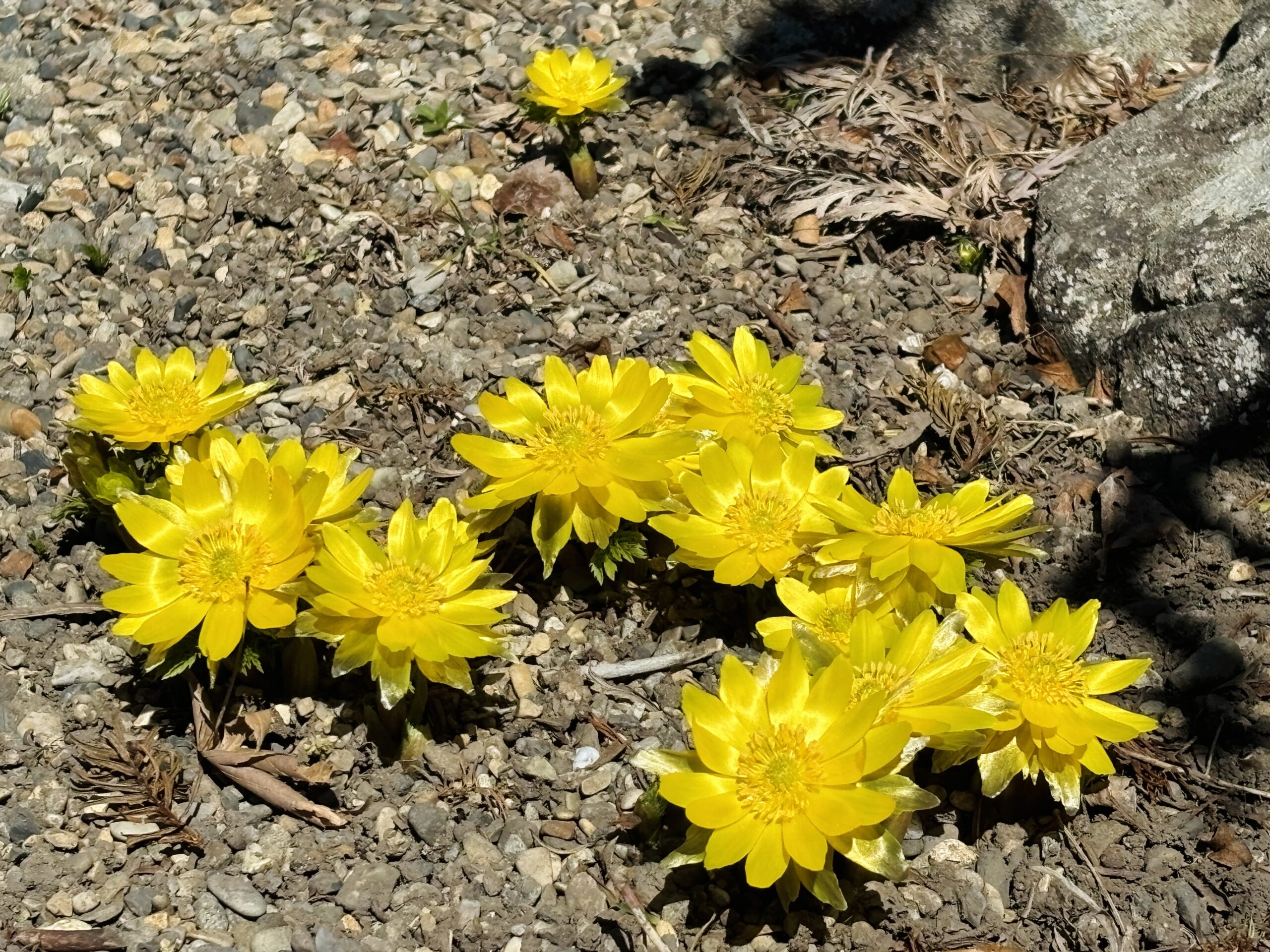「フクジュソウ(福寿草)」
Do you know about a flower called Fukujyusou in Japanese that heralds spring? It has been considered a plant of good fortune since Edo period. At 4T-AMKY, Teachers and Students write about Japanese culture, food, history, many spots to visit, and other stuff. Enjoy reading and knowing about deeper Japanese culture!
“Fuku-jyu-sou”
(Scientific name: Adonis ramosa.
English name: Amur adonis)
Fuku means happiness.
Jyu means longevity and happiness.
Sou means plants.

On March 27, 2024, when I returned to my family home in Hakodate city, located in Hokkaido, the northernmost island in Japan, Fukujyusou flowers were blooming in the garden. Their golden petals were gleaming conspicuously amid the wintry hues of the garden.

When I looked it up on the internet, I found that Fukujyusou blooms during the Lunar New Year (February-March in the new calendar). During the Edo period, it was initially called “Fuku-tsugu-sou,” signifying the first flower to announce the arrival of spring(signifying good luck). However, due to unfavorable phonetics, “tsugu” was later replaced with “Jyu” (meaning longevity and happiness), thus becoming “Fuku-jyu-sou.” It is said to symbolize happiness and longevity, often displayed during the New Year as auspicious flowers that bring happiness and longevity.
(Source: Japan Pharmaceutical Association https://www.pharm.or.jp/flowers/post_12.html)

People in the Edo period probably felt the same joy when they saw the sparkling Fukujyusou flowers in the still winter scenery. I think the Japanese people who named it “Fuku-tsugu-sou” had a wonderful sensibility, and I hope that this kind of sensibility will be passed down to the future generations as science and technology continue to evolve.
春を告げる花 福寿草(フクジュソウ)
2024年3月27日、函館の実家に帰ったら、庭に福寿草が咲いていました。黄金色の花びらが冬色の庭の中でひときわ輝いていました。
ネットで調べてみると、福寿草は旧暦のお正月(新暦の2-3月)に咲くお花です。江戸時代には、春(福)を告げる最初の花として「福告ぐ草(フクツグソウ)」と呼ばれていましたが、後に語呂が悪いために「寿」に置き換えられ、「福寿草」となったそうです。そして、幸福を招き長寿を意味する縁起の良いお花として、お正月に飾られるようになったそうです。
(出典:公益社団法人日本薬学会https://www.pharm.or.jp/flowers/post_12.html)
まだ冬の景色が残る中で、きらきら輝く福寿草を見た時の喜びは、江戸時代の人々も同じだったのですね。それを「フクツグソウ」と名付けた日本人の感性は素晴らしいと思いますし、そのような感性は科学技術が進化し続ける未来にも受け継がれてほしいと思います。
Aki.Sawaguchi.
Editor: Stuart Cauley.






